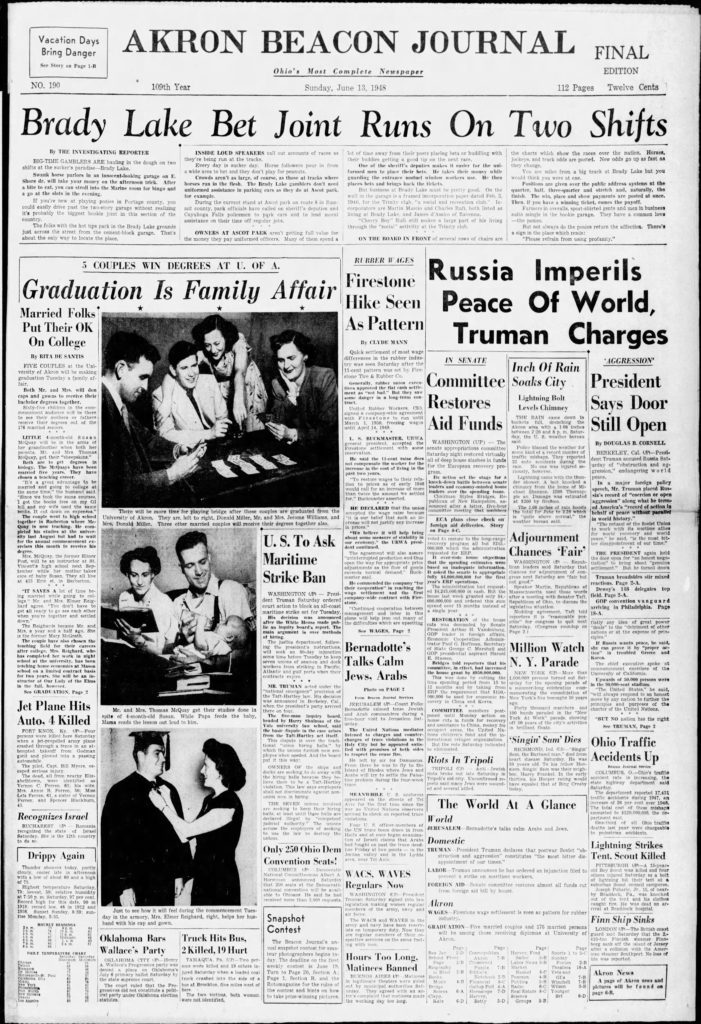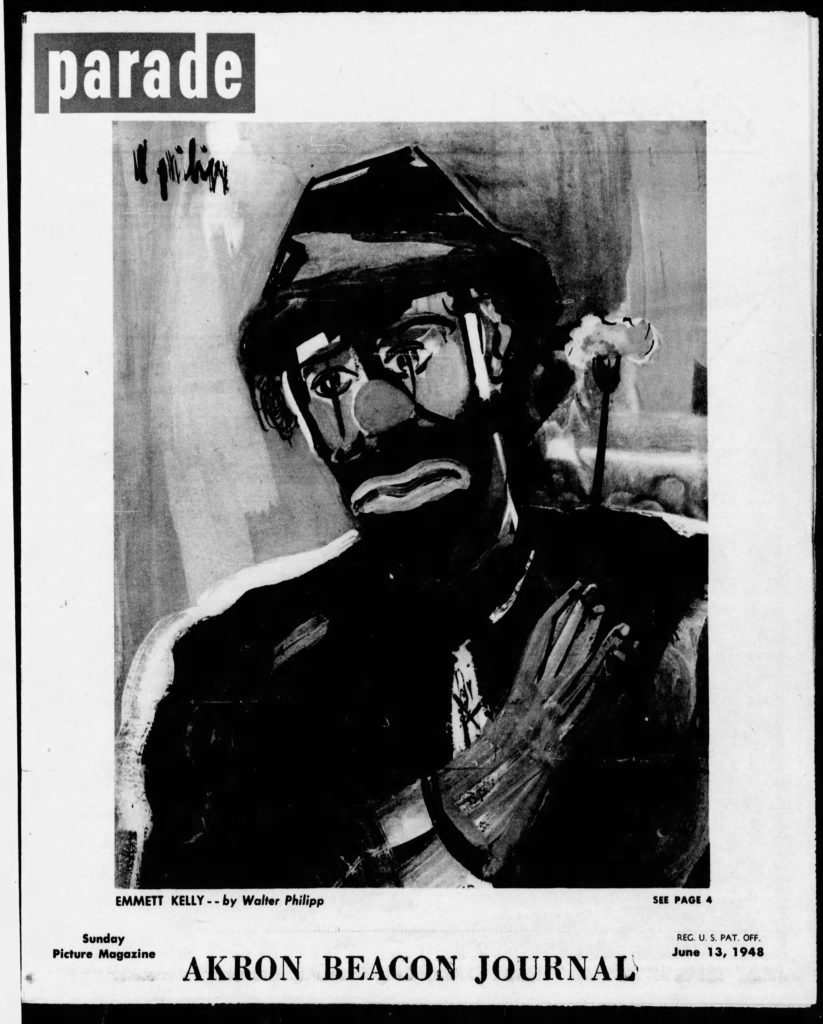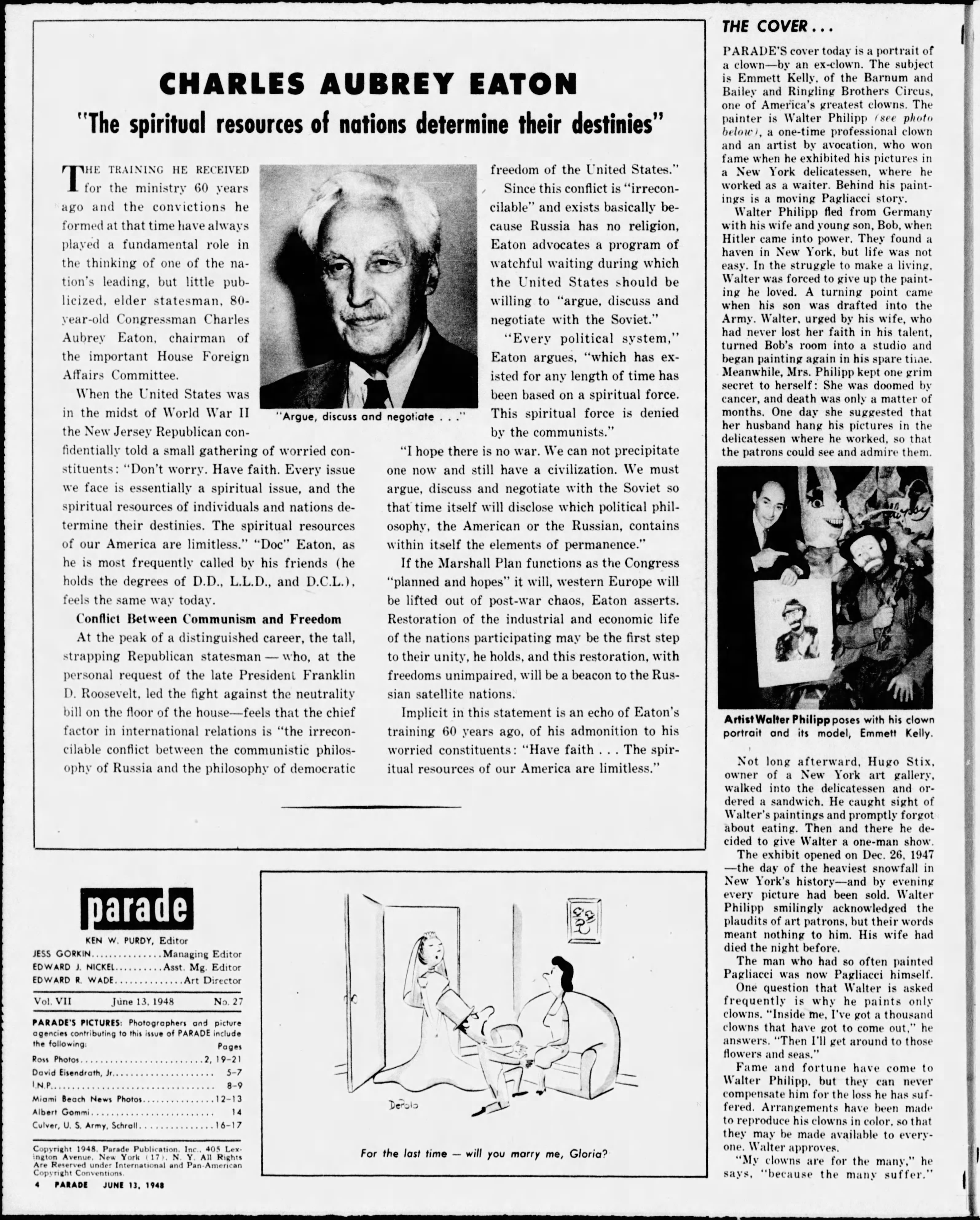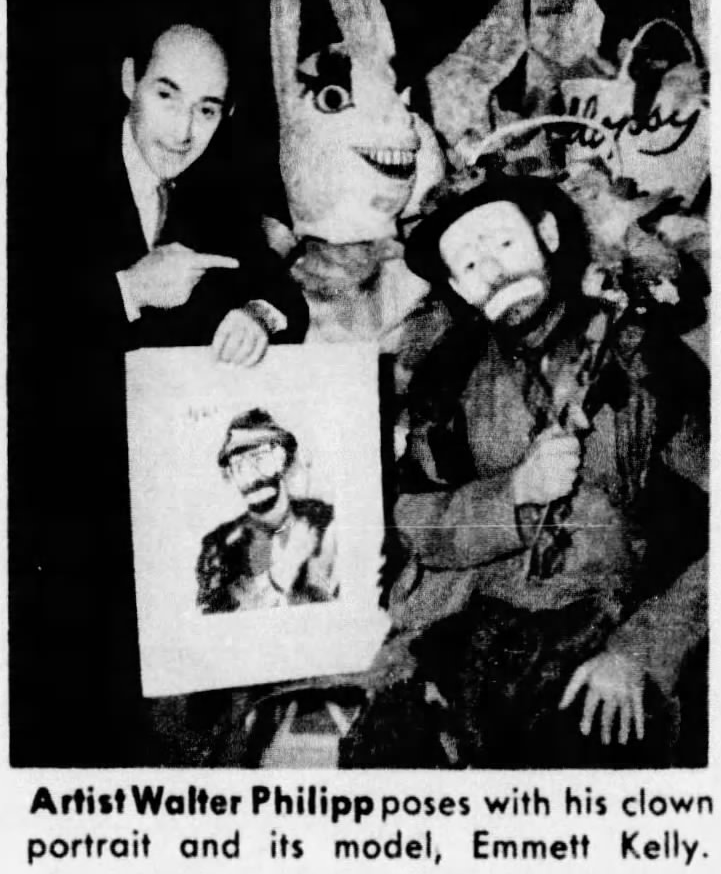


article about Walter Philipp (converted to readable text at the bottom)

THE COVER…
PARADE’S cover today is a portrait of a clown-by an ex-clown. The subject is Emmett Kelly, of the Barnum and Bailey and Ringling Brothers Circus, one of America’s greatest clowns. The painter is Walter Philipp, a one-time professional clown and an artist by avocation, who won fame when he exhibited his pictures in a New York delicatessen, where he worked as a waiter. Behind his paintings is a moving Pagliacci story.
Walter Philipp fled from Germany with his wife and young son, Bob, when Hitler came into power. They found a haven in New York, but life was not easy. In the struggle to make a living, Walter was forced to give up the painting he loved. A turning point came when his son was drafted in the Army.
Walter, urged by his wife, who had never lost her faith in his talent, turned Bob’s room into a studio and began painting again in his spare time.
Meanwhile, Mrs. Philipp kept one grim secret to herself: She was doomed by cancer, and death was only a matter of months. One day she suggested that her husband hang his pictures in the delicatessen where he worked, so that the patrons could see and admire them.
Not long afterward, Hugo Stix, owner of a New York art gallery, walked into the delicatessen and ordered a sandwich. He caught sight of Walter’s paintings and promptly forgot about eating.
Then and there he decided to give Walter a one-man show.
The exhibit opened on Dec 26, 1947 – the day of the heaviest snowfall in New York’s history-and by evening every picture had been sold.
Walter Philipp smilingly acknowledged the plaudits of art patrons, but their words meant nothing to him. His wife had died the night before.
The man who had so often painted Pagliacci was now Pagliacci himself.
One question that Walter is asked frequently is why he paints only clowns. “Inside me, I’ve got a thousand clowns that have got to come out,” he answers. “Then I’ll get around to those flowers and seas.”
Fame and fortune have come to Walter Philipp, but they can never compensate him for the loss he has suffered. Arrangements have been made to reproduce his clowns in color, so that they may be made available to everyone. Walter approves.
“My clowns are for the many,” he says, “because the many suffer.”